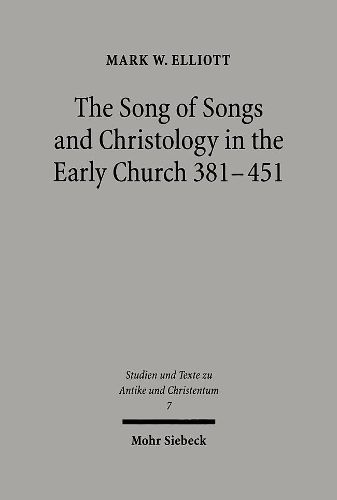Readings Newsletter
Become a Readings Member to make your shopping experience even easier.
Sign in or sign up for free!
You’re not far away from qualifying for FREE standard shipping within Australia
You’ve qualified for FREE standard shipping within Australia
The cart is loading…






Mark W. Elliott presents a range of interpretations of the imagery used in the Song of Songs and demonstrates how the figures of the Bridegroom and Bride were understood. He pays attention to the historical context of those commenting on the Song between the councils of Constantinople 381 and Chalcedon 451, including theological disputes and spiritual movements. Showing how they found significance in such an unlikely text leads on to the conclusion that the commentators are largely in agreement that the Song refers to a meeting of the Word of God in his incarnate form, reaching out to all humanity, and the collective humanity, viewed in the obedient responsiveness of a bride. This responsive collective humanity is described variously in terms of ‘church’, believing soul, soul of Christ and humanity of Christ. Mark W. Elliott selects specifically Christological readings (i.e. those which interpret the Song with reference to the incarnation) and gives some reasons for the demise of such an interpretation and of commentary writing as a whole during that period.
$9.00 standard shipping within Australia
FREE standard shipping within Australia for orders over $100.00
Express & International shipping calculated at checkout
Mark W. Elliott presents a range of interpretations of the imagery used in the Song of Songs and demonstrates how the figures of the Bridegroom and Bride were understood. He pays attention to the historical context of those commenting on the Song between the councils of Constantinople 381 and Chalcedon 451, including theological disputes and spiritual movements. Showing how they found significance in such an unlikely text leads on to the conclusion that the commentators are largely in agreement that the Song refers to a meeting of the Word of God in his incarnate form, reaching out to all humanity, and the collective humanity, viewed in the obedient responsiveness of a bride. This responsive collective humanity is described variously in terms of ‘church’, believing soul, soul of Christ and humanity of Christ. Mark W. Elliott selects specifically Christological readings (i.e. those which interpret the Song with reference to the incarnation) and gives some reasons for the demise of such an interpretation and of commentary writing as a whole during that period.